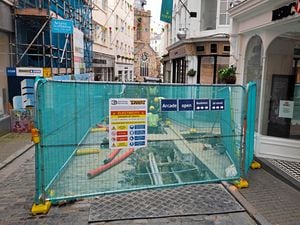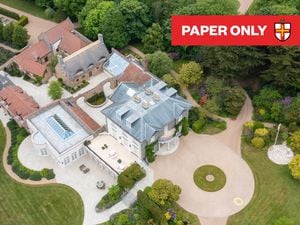Vale Mill quarry face cleared to see if it will support build
THE Vale Mill quarry ‘Grand Design’ project has moved on to another key stage.
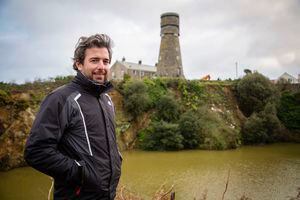
The last two days have seen contractors from Treevolution and Bob Froome & Sons combine to clear large portions of undergrowth on the quarry face with the hope that, once exposed, analysis of the rock will show it is sturdy enough to withstand the development of a cantilevered building extension connected to the mill by a tunnel.
Meanwhile, across the quarry States archaeologist Dr Philip de Jersey has taken advantage of last week’s exposure of old quarry buildings in the hope of discovering some clear proof of what exactly they were used for.
Quarry owner and project developer James Ridout explained the reasons for the latest phase.
‘We’ve cleared the north end and have the States archaeologists down to investigate the two out-houses and see if there are any floors etc, and will then clear the eastern face of the quarry to give us an idea of the make-up of the rock face so we can see the practicalities of fitting a box [rooms].
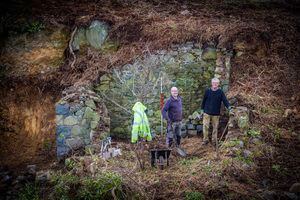
‘At the minute it seems quite shaly everywhere but with a bit of luck we will find enough solid stuff for us to build off.’
How secure the rock face has to be to enable such a structure to hang over a quarry is a major point the owners have yet to clarify.
‘That’s a good question that we are going to fire off to some of the local experts. They cannot tell us anything until we have got it all clear, so once that clearance has been done we will ask a couple of local companies with their expertise in structural and civil engineering to come down and see what we can do and if it is even feasible.’
Mr Ridout said it was an obvious thing to do to involve Dr de Jersey after previously working alongside him on a project in King’s Road.
‘As soon as we saw this we asked if he’d be interested. He has come down and photographed it all and they are hoping to find a stone floor and anything else that is exciting.’
Dr de Jersey and a colleague have made quick progress in clearing the small cottage building nearest the quarry edge.
‘We are trying to uncover a bit more of these buildings and possibly make a guess as to what they were used for.
‘We have not got that far yet, but we have made a good start.
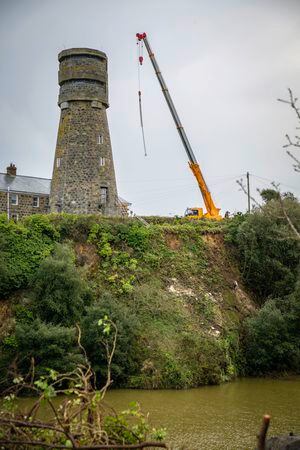
‘We are still kind of hoping for a nice stone floor as they clearly put an effort into building them and they were obviously not short of nice stone, so you might expect a granite floor.
But we have not got to that depth yet.’
Dr de Jersey said the buildings were quite small.
‘They certainly had shelter from when they were blasting so maybe it was the equivalent of the site hut.
‘But they put some care into building it. It is nice dressed stone in the coins and corners.
‘One of the curious things is we have not found any slate or tile from the roof, so maybe that was taken away and used somewhere else when it fell into disuse.’
Among the first discoveries have been a large granite lintel, approximately five feet long, with iron railings mysteriously embedded into it.
It is thought quarrying on the Hougue du Moulin site stopped in the very early 1900s and possibly lasted no more than 30 years from the late 1800s.
The first evidence of a quarry on the Vale Mill site is 1877 when it was bought from owner John Naftel by John Mowlem & Co.
It is marked on the 1898 Ordinance Survey map as ‘old quarry’, by which time it is thought to be largely filled with water.
It was sold to the Water Board in 1914.



